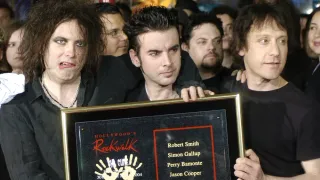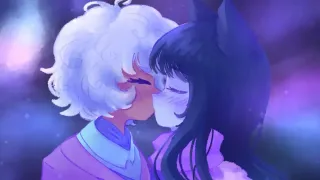March 21, 2018
Pacific Rim: Uprising
Greg Vellante READ TIME: 3 MIN.
"Pacific Rim: Uprising" is nothing but an echo funneled through a straw, derivative and painfully empty in its every move. It is a sequel to Guillermo del Toro's 2013 film "Pacific Rim," which found the recent Oscar-winner dabbling in the subject matter of Jaegers (giant, human-controlled robots) versus Kaiju (gargantuan alien creatures, named after the Japanese word for "strange beast" and also an homage to the same country's film genre that featured massive creatures, such as Godzilla, squaring off against mankind).
This hugely entertaining film, while arguably del Toro's weakest effort, set a big-budget stage for the filmmaker's noted affinity for monsters, detail and unhinged imagination. Its sequel, on the other hand, is as imaginative as a comatose carrot. This agonizing cash-grab is quite literally a vegetable, dead on arrival inside a coffin made of mediocrity and buried within a shallow grave of uninspired bullshit.
With its $150 million budget and four credited screenwriters, "Pacific Rim: Uprising" has absolutely nothing to show for it. Instead, the film chooses to plod along with the predictable beats of countless blockbusters that came before it. You can practically hear a liberal arts college screenwriting professor narrating over the film during its duration, explaining how it hits its three-act structure minute marks for the "midpoint" and the "second act break." Every step this story takes, every shot, every cut, is concrete evidence of lazy storytelling and cinematic blindness.
Director Steven S. DeKnight, in his feature directorial debut, is a quintessential example of why maybe you shouldn't hand the keys to a big-budget action vehicle over to a guy who directed seven episodes of television for shows like The WB's "Angel" and "Smallville." This film is visually ugly, inconsistent and incoherent, aurally obnoxious and mentally exhausting.
"Pacific Rim: Uprising" graduated from the Michael Bay school of "Transformers"-style filmmaking where exposition scenes are photographed in murky earth tones and action sequences are cut together to resemble seizure-inducing, metal-toned vomit. DeKnight fills his frames with nothing of substance, creating a film that is being released in IMAX so people can pay extra to watch something with the visual muscle of a stamped envelope. Hell, to say the envelope is even stamped feels like unwarranted generosity.
In the film's leading roles, not even a charismatic John Boyega or spunky newcomer Cailee Spaeny can save "Pacific Rim: Uprising" from its excruciating execution. The film also attempts to reinvigorate the comedic chemistry of its two doctor characters from the first film, played by Charlie Day and Burn Gorman, but even this effort comes up short (due to reasons I don't even want to discuss because I'm actively trying to erase them from my memory).
Every shot this film takes is a misfire, and its assaultive banality is perhaps the worst thing about it. At least the "Transformers" films are somewhat interesting in their misguided ambition and bonkers implementation. This pale imitation of an already-godawful franchise is even worse - it's just so fucking boring, to the point where I literally felt the minutes of my life that I'll never get back drifting away from me like Jack did from Rose in "Titanic."
The entirety of "Pacific Rim: Uprising" can be summarized in a single shot that takes place near the film's finale, after a Jaeger knocks down one of its opposing Kaiju monsters. The humans inside the Jaeger control their robot to make it flip off the dead beast with both hands. Two middle fingers, both made of steel, framed in a way that makes it seem as if it's pointed directly at the audience. Yep. Sounds about right.






